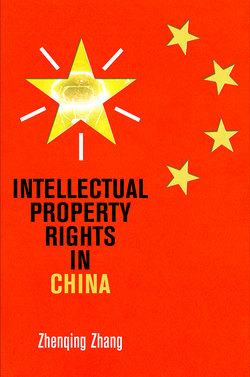Intellectual Property Rights in China

Реклама. ООО «ЛитРес», ИНН: 7719571260.
Оглавление
Zhenqing Zhang. Intellectual Property Rights in China
Отрывок из книги
Intellectual Property Rights in China
Zhenqing Zhang
.....
This book aims to unravel the complexities of how various state and societal actors in China compete and collaborate in shaping China’s IPR policy. My introduction lays the theoretical foundation for this book with the comparative literature on IPR enforcement and presents the book’s main theoretical claim. The six empirical chapters following the introduction are grouped into three parts, respectively addressing China’s difficult journey to adopt and implement global patent, copyright, and trademark norms. It is noteworthy that, at least during the early stage of adoption, the Chinese government was a “strategic ratifier” rather than a “sincere ratifier.”30 That is, the Chinese government adopted IPR norms into its domestic legislation not for the sake of enhancing IPR protection but more because it wanted to avoid direct trade conflict with the United States in the early 1990s and to ameliorate its bid for WTO membership in the late 1990s. Thus, although Chinese IPR legislation had already reached the minimum standard set by the WTO during the country’s entry in 2001, obstacles remained when it came to the implementation stage.
The first part, consisting of Chapters 1 and 2, focuses on patents, which mainly protect technological and industrial innovation. Chapter 1 examines the evolution of China’s patent legislation while Chapter 2 examines the implementation of Chinese patent policy. Instead of rehashing Chinese patent law from one article to another, Chapter 1 examines how various domestic and foreign political/economic forces have led the country’s patent regime to its present state. I demonstrate that there was already an incipient notion of protecting technological innovation in China even before the country started its market reform in the late 1970s. Although long suppressed by the dominance of socialist public ownership, Chinese patent legislation gained momentum in the early 1980s. The primary driving forces behind those moves were China’s growing recognition of scientific invention and technological innovation as private property and the need to attract foreign investment and technological know-how. Using newly acquired empirical data, I demonstrate how China’s expanding interests in foreign trade and international technological exchange helped to overcome the opposition from the antipatent camp in the Chinese government in the 1980s and the early 1990s. Marked by China’s WTO entry in 2001, Chinese patent legislation came into full compliance with the global standard.
.....